Our Lady of Victory Catholic Church Celebrates 150 Years in Stuyvesant Heights
One of the many churches that gave rise to Brooklyn’s nickname as the ‘Borough of Churches,’ Our Lady of Victory on Throop Avenue has a long and proud history.

The steeple of Our Lady of Victory Roman Catholic Church rises high above the brownstone blocks of Stuyvesant Heights. One of the many churches that gave rise to Brooklyn’s nickname as the “Borough of Churches,” Our Lady of Victory at 583 Throop Avenue in Bedford Stuyvesant has a long and proud history that is being celebrated this year — the church’s 150th anniversary.
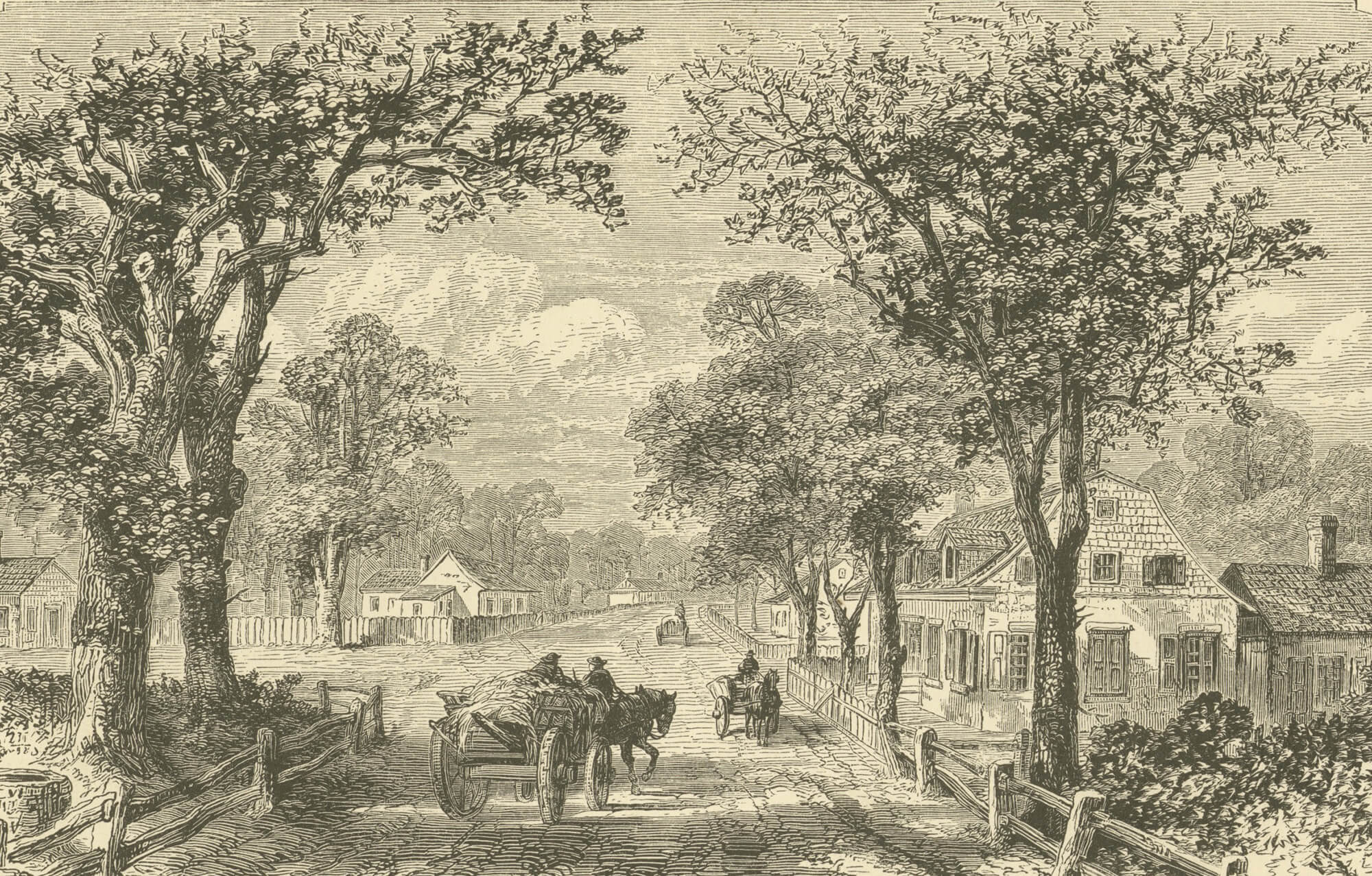
In 1868 there was no Stuyvesant Heights. There were only open fields bisected by a few roads, and scattered houses. The closest major street was the Jamaica Plank Road, a toll road that today approximates Fulton Street, which stretched from downtown to Queens. It was a vital thoroughfare between Jamaica and the Brooklyn piers. Stage coaches also traveled on the road, often stopping at places like the Three Mile House, an inn located about where today’s Restoration Plaza stands in Bedford Stuyvesant. Because the road was so vital, a toll was charged, with toll gates dotting its length. One of those gates stood near today’s Decatur and Lewis Avenues.

The Stuyvesant Heights area was considered the eastern end of the town of Bedford and was almost as far east as one could go and still be in Brooklyn. East New York and New Lots were a part of Flatbush, which was a separate town until 1894. Bushwick, to the northeast, had only been annexed to the city of Brooklyn in 1854. The street grid was laid out, and streets named, but the land belonged primarily to the Lefferts family until the 1850s. This was still the hinterland.
The Beginnings of a Parish
Catholics have been in Brooklyn for centuries but were always religious minorities. There were always those who felt that Catholics had their first loyalties to the Pope in Rome, and those who felt threatened by Catholic “mysterious” religious rites and practices.
The Potato Famine brought thousands of poor Irish Catholics to New York beginning in the mid-1840s. More prosperous Irish came later, as did German Catholics driven to America by civil wars among the German nation-states. The last years of the century brought in thousands of Italians, Poles and other Catholics.
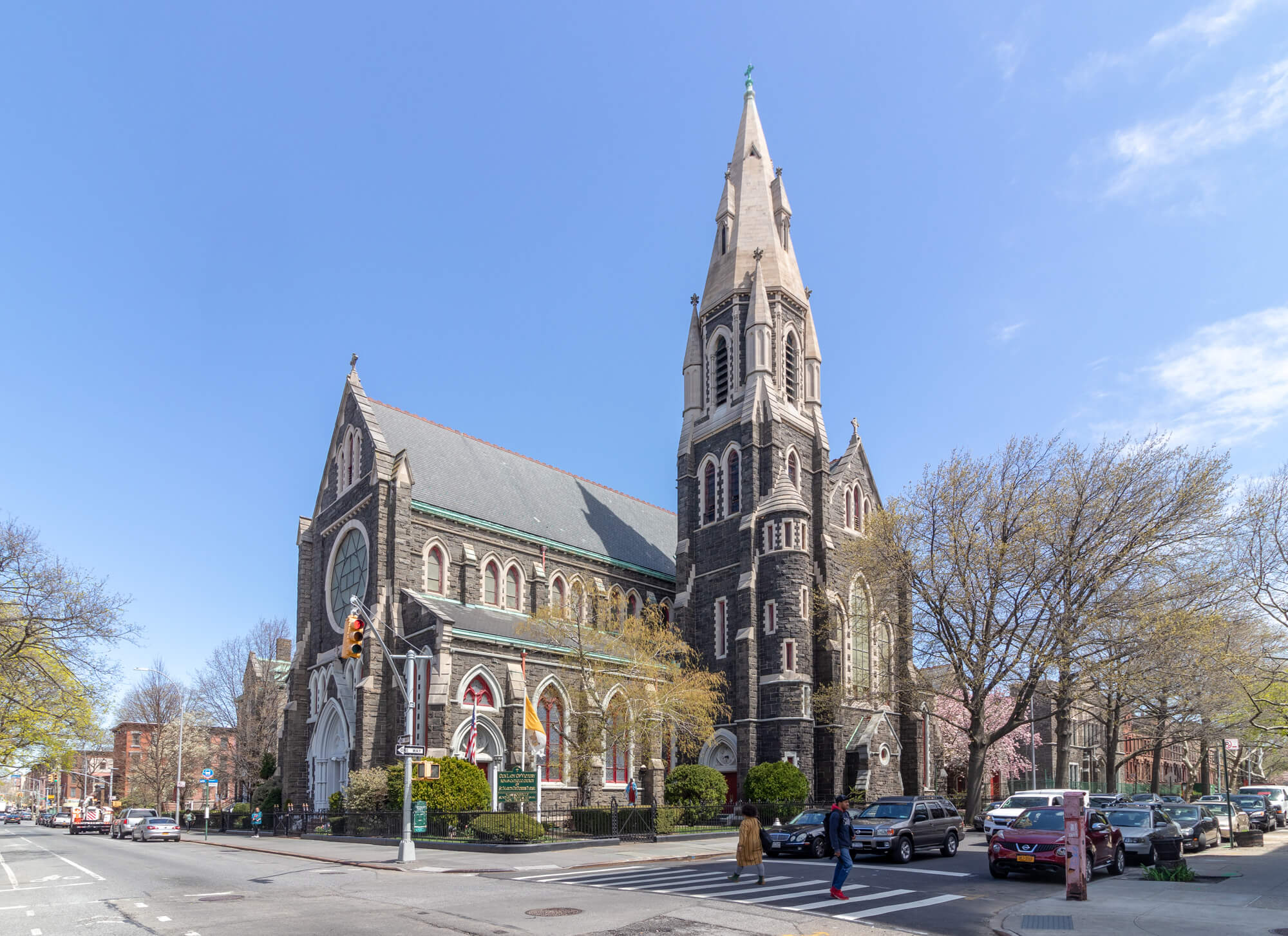
The earliest groups began founding parishes in their communities, so many that in 1853, John Laughlin was appointed by the Vatican to become Brooklyn’s first Bishop, charged with managing this vast growth. He would preside over a period of enormous Catholic expansion, and with it, political and social power. During his tenure, from 1853 to his death in 1891, Brooklyn’s Catholics grew from 15,000 to 400,000 souls. They would need a lot of churches, schools, convents, orphanages and hospitals.
Our Lady of Victory was the first parish to be founded in this part of Bedford. It split from the East New York parish of St. Malachy’s, an Irish congregation on faraway Van Siclen and Atlantic avenues. There weren’t that many Catholics in this part of Bedford, but that would change. In early 1868, the first meetings for the new parish were held at the Three Mile House, with 18 members pledging money to build a church. The new flock was under the leadership of Rev. Patrick Creighton.
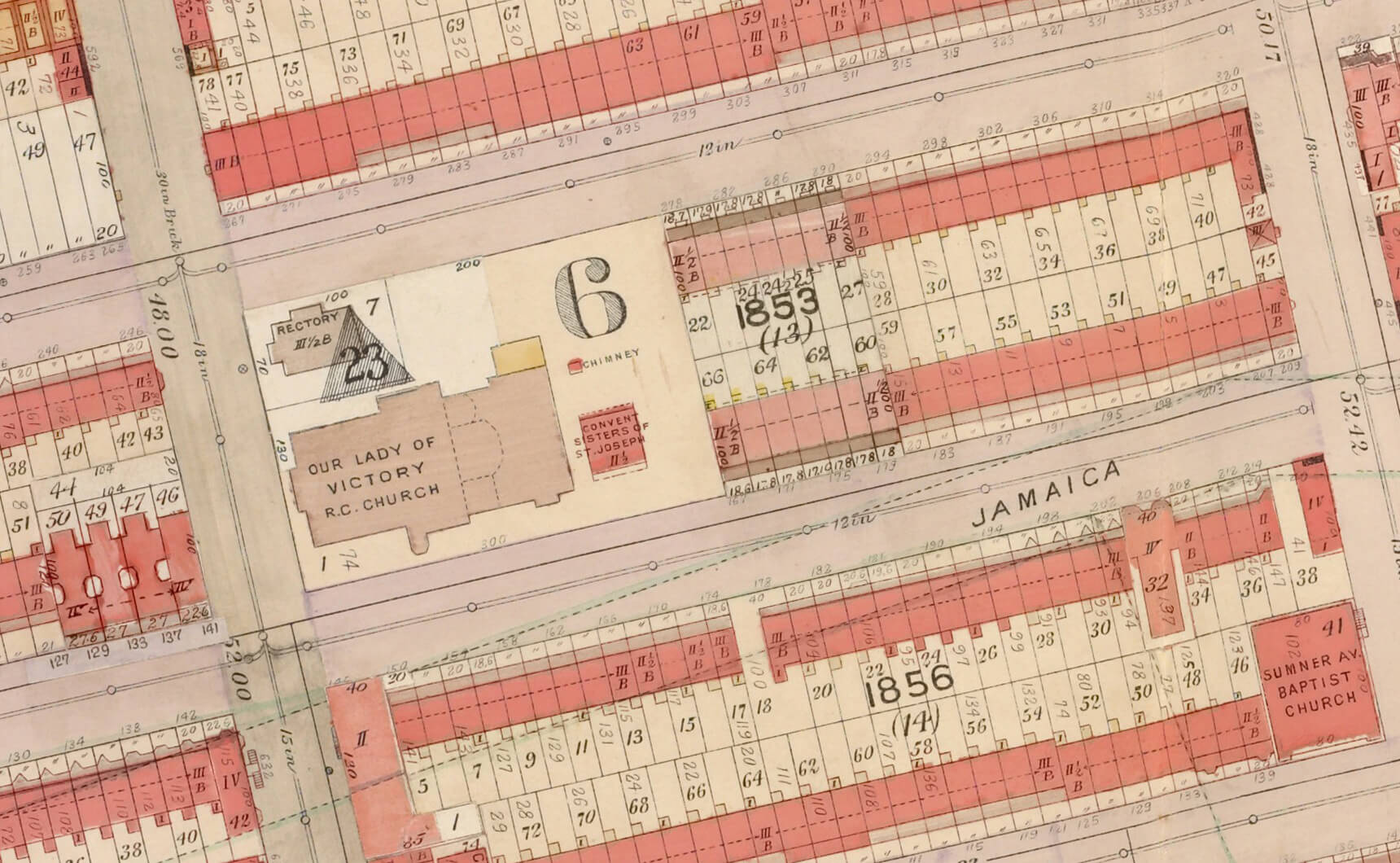
Finding land was difficult, as anti-Catholic bigotry was rife, but eventually, a site was found on MacDonough Street and Throop Avenue. The group purchased 30 lots along Throop Avenue, most between MacDonough and Macon Street. These were open fields at that time, and tales of people slogging through corn and potato fields, determined to go to mass, fill the early history of the parish.
The land cost $25,000, which they paid off in three years, at great sacrifice. By then they had completed a wooden chapel, which was consecrated on July 26, 1868. Five years later, they replaced that church with a small stone church, and continued to use the old church building to house a school, opened in 1872.
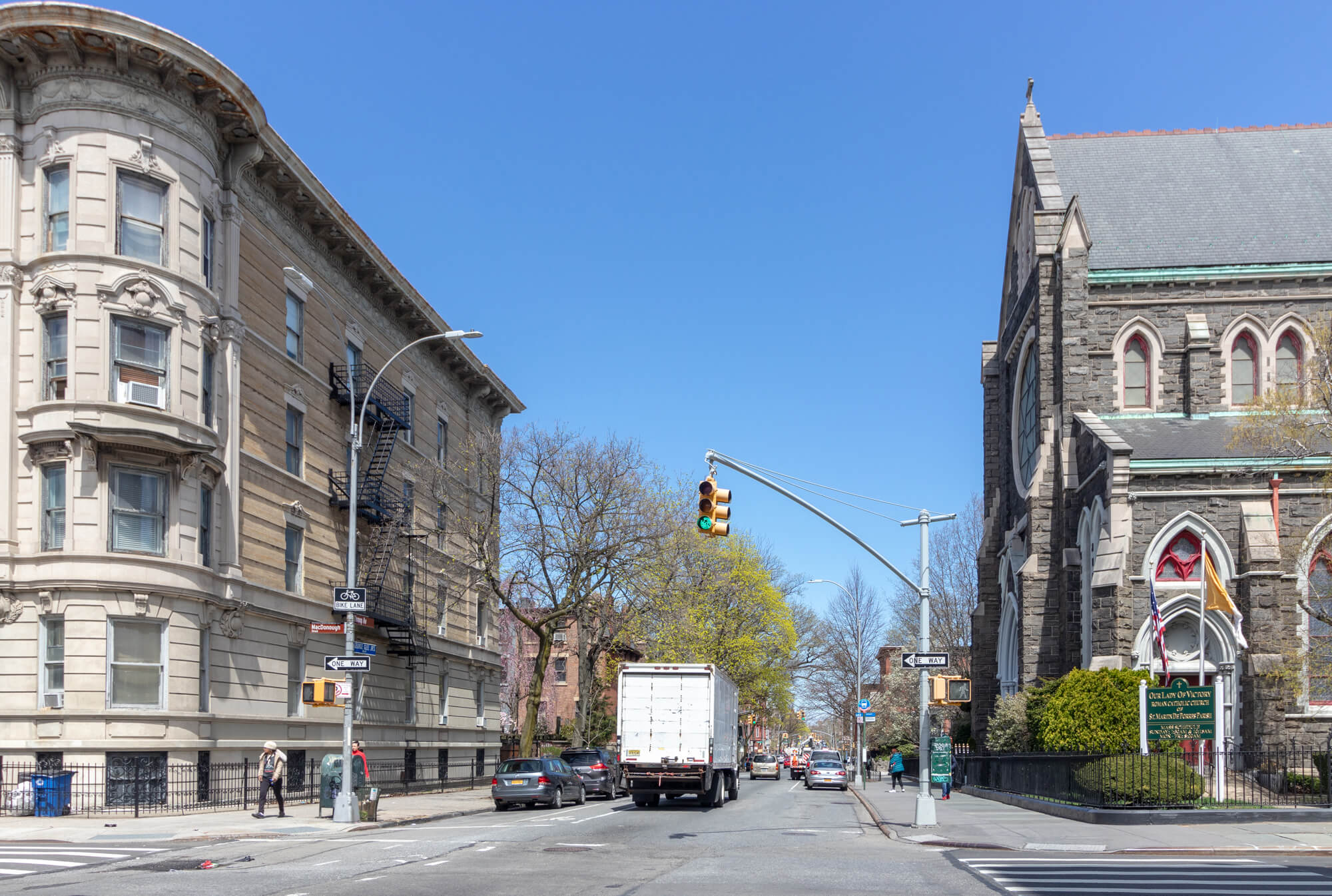
The parish continued to grow, as did the community around it. The potato fields were replaced by homes. MacDonough Street was named for Thomas McDonough, an American Navy hero during the War of 1812. The first houses on the street were large suburban villas with ample grounds. The Betts house at 97 MacDonough was built in 1861. Next door, William A. Parker, a hops merchant built a home in 1863. He sold it several years later to James McMahon, then a railroad and shipping merchant and a significant player in our story.
By the early 1870s, row houses started to go up in this part of Bedford, the earliest being just down the street, at 111-127 MacDonough, which were built in 1871. By the end of the century, this entire area was totally built up, with blocks and blocks of upscale row houses, punctuated by churches, commercial buildings, schools and apartment buildings. Our Lady of Victory was no longer in the country.
Building a New Church for Our Lady of Victory Parish
By the 1880s, Stuyvesant Heights had a large and increasingly wealthy Irish population. One of the community’s leaders was James McMahon, who had transitioned from shipping magnate to banking. In 1893 he was appointed the president of Emigrant Savings Bank, the largest and wealthiest savings bank in America. It had been founded in Manhattan in 1850 as a savings bank for Irish immigrants. McMahon was also on the board of the People’s Bank and was active in Catholic charities. The Brooklyn Eagle pronounced him “the leading lay member of the Catholic Church in this city.”
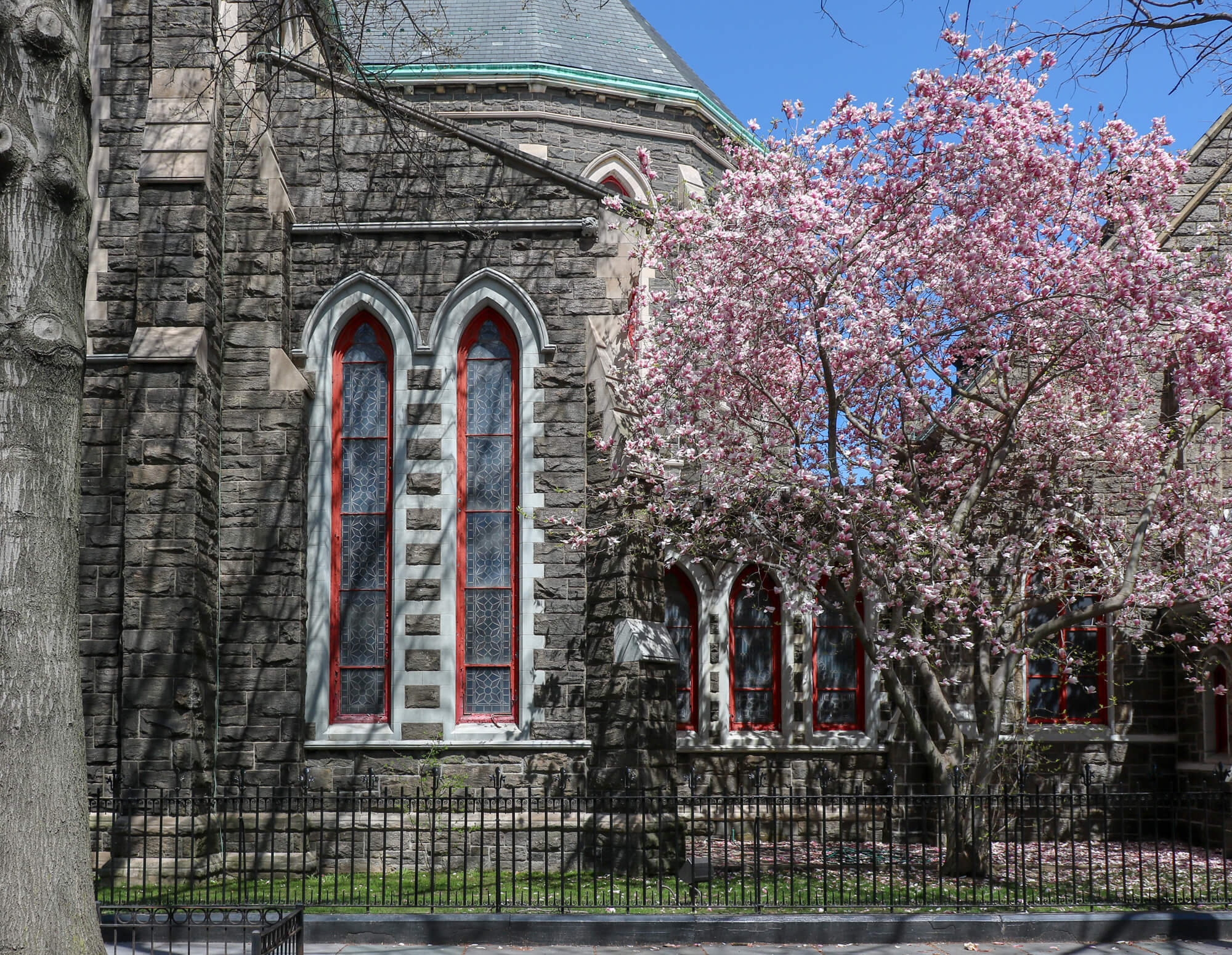
The McMahons and other well-to-do members of the church began a long-term fundraising campaign to build a much larger church. The women of the parish did most of the work, organizing concerts, fairs, picnics and other money-raising events. The Brooklyn Eagle chronicles at least ten years of fundraisers, the articles alternating with stories of parish activities and growth.
Since the founders had the good sense to buy a great deal of land in 1868, they were also able to sell some of the lots to developers, giving the church the necessary revenue to begin the process of hiring an architect and building a new church. Two years before work commenced, the elderly Fr. Creighton was replaced by the Rev. James Woods.
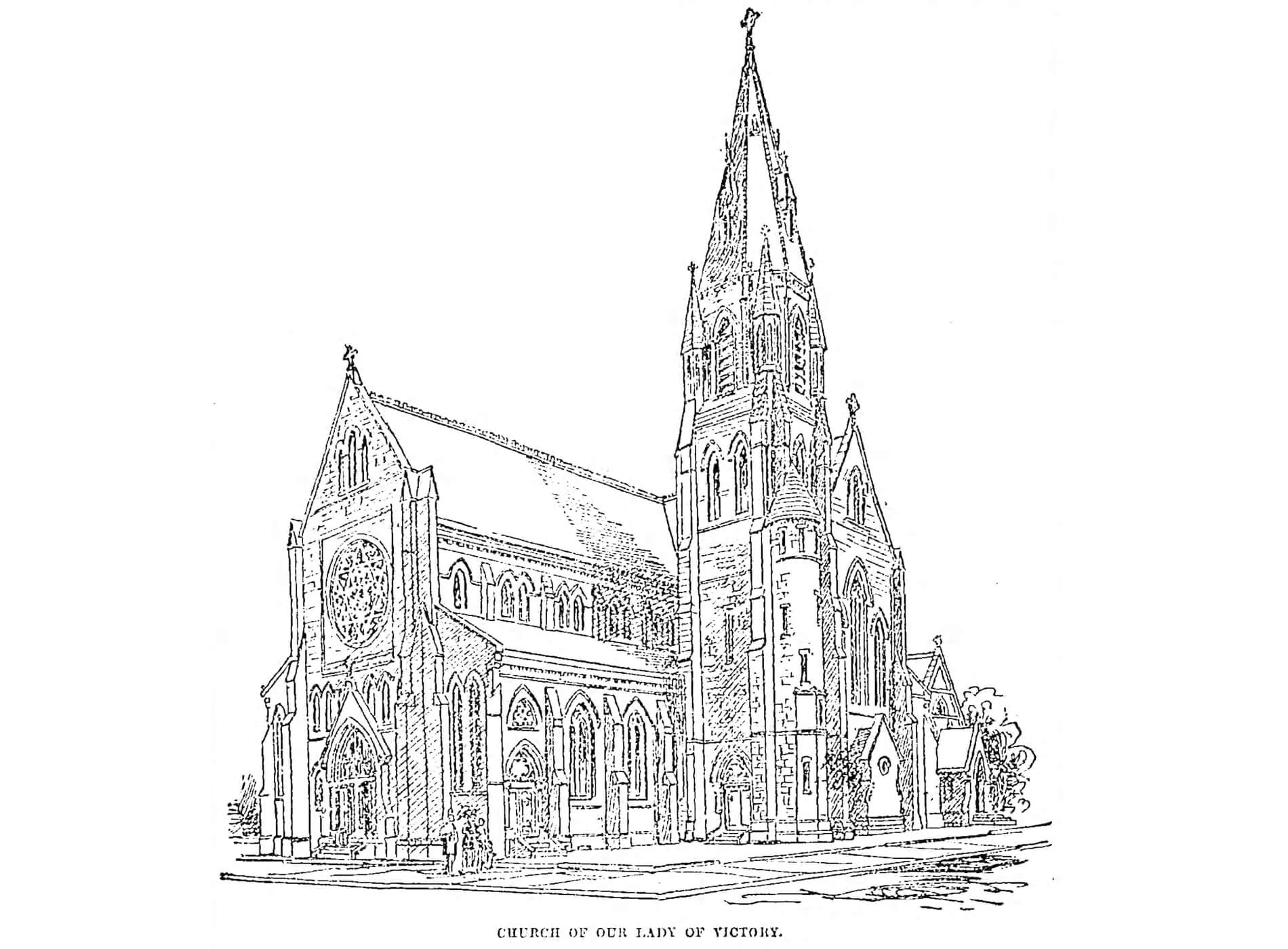
He hired Thomas Houghton, one of the best Catholic church architects in the business. Houghton was the Irish-born son-in-law of Patrick Keely, the dean of Catholic church architects. Keely, also an Irish immigrant, was America’s most prolific church architect in the 19th century, responsible for the design of hundreds of churches, schools, and religious buildings up and down the East Coast. Keely churches are concentrated in NYC, Philadelphia, Boston, Albany and more.
Thomas Houghton apprenticed with Keely in the 1850s. He enlisted in the army during the Civil War as a paymaster, and once the war was over, went back to working for Keely. He married the boss’s daughter Mary in 1870. Keely and Houghton, together and separately, designed most of the Catholic churches in Brooklyn, all built during Bishop Laughlin’s tenure, and with his hearty endorsement and approval. They built beautiful churches, many of which still stand.
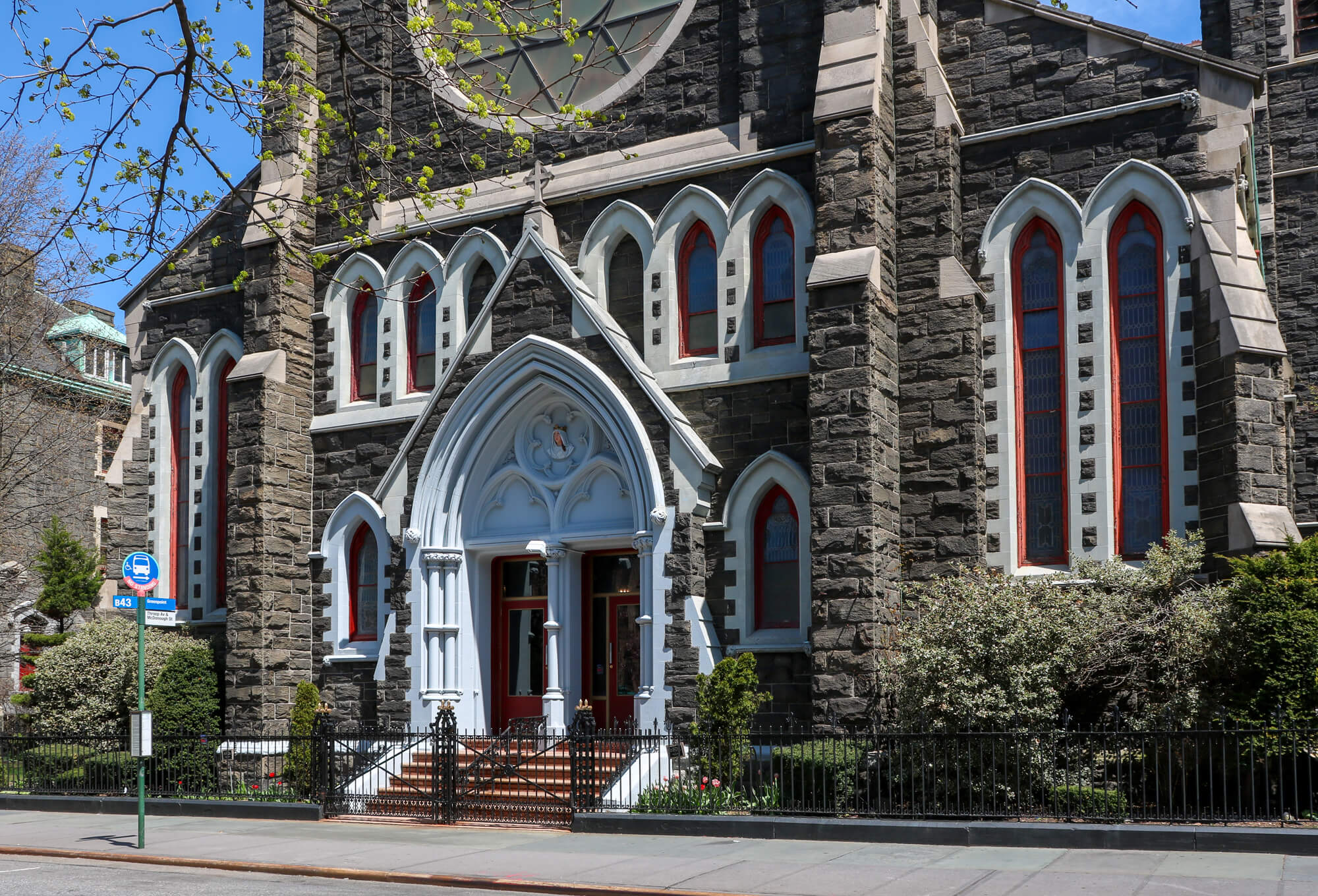
Our Lady of Victory is made of black granite schist, the bedrock stone of Manhattan. The stone is cut in a random ashlar or rough-cut manner, trimmed with smooth-cut limestone. This contrast of light and dark, rough and smooth is striking and symbolic, setting the church apart from Houghton’s other work.
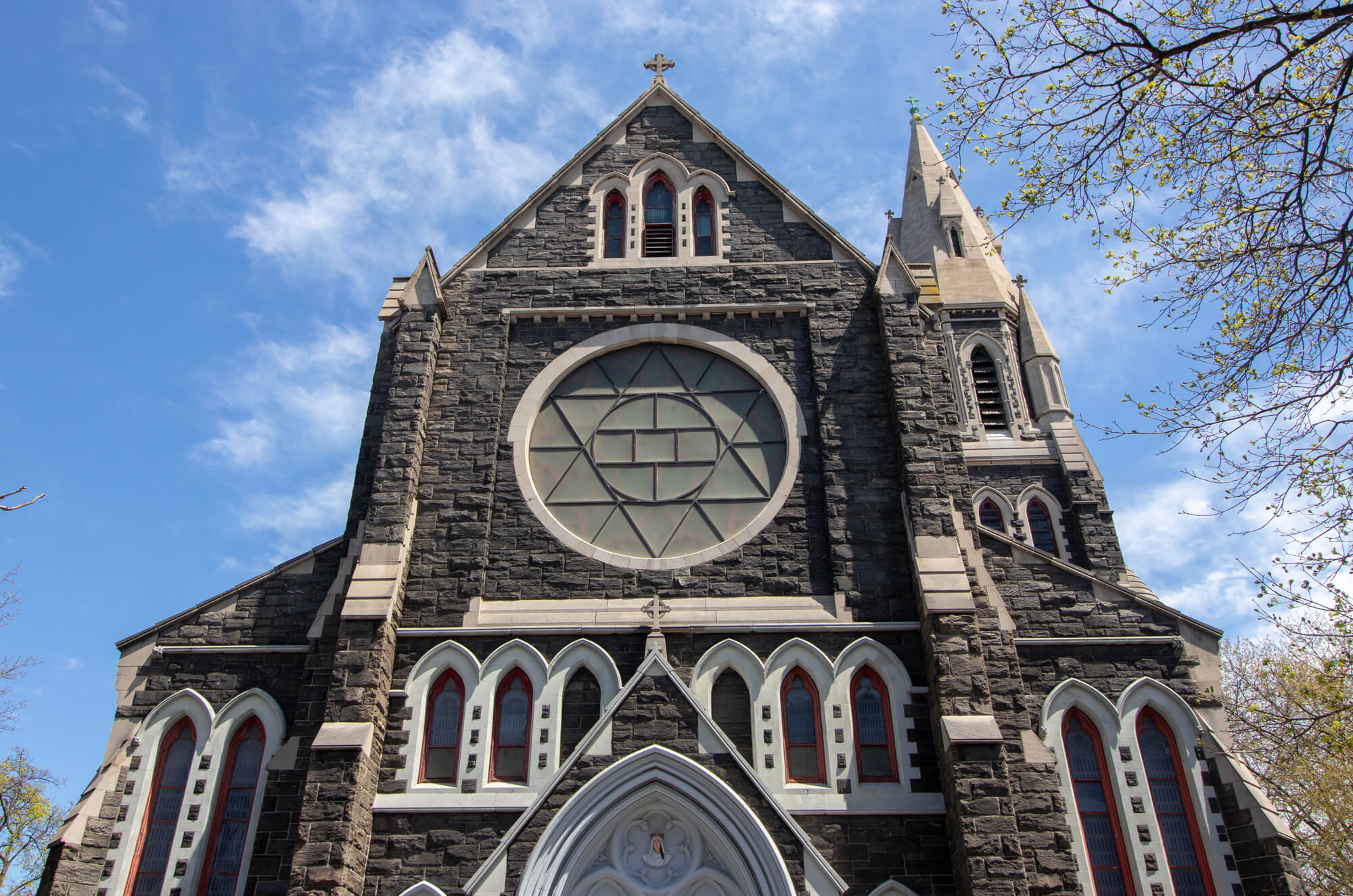
The church commands this corner, its steeple peppered with smaller towers rising high above the Gothic arches of the building. Houghton gave the church a large rose stained-glass window in the front, and more towers on the side, balancing out the play of shapes and massing.
The interior of the church was as stunning as the exterior. The church had a center main altar and two side altars. Soaring arched spaces filled the nave. The interior artwork was painted by Ferdinand Baraldi of Pennsylvania, one of the pre-eminent church artists of his day. The carved Stations of the Cross came from an artisan in Munich. The stained glass windows were equally impressive. The huge rose window includes a Star of David, referencing Old Testament iconography.
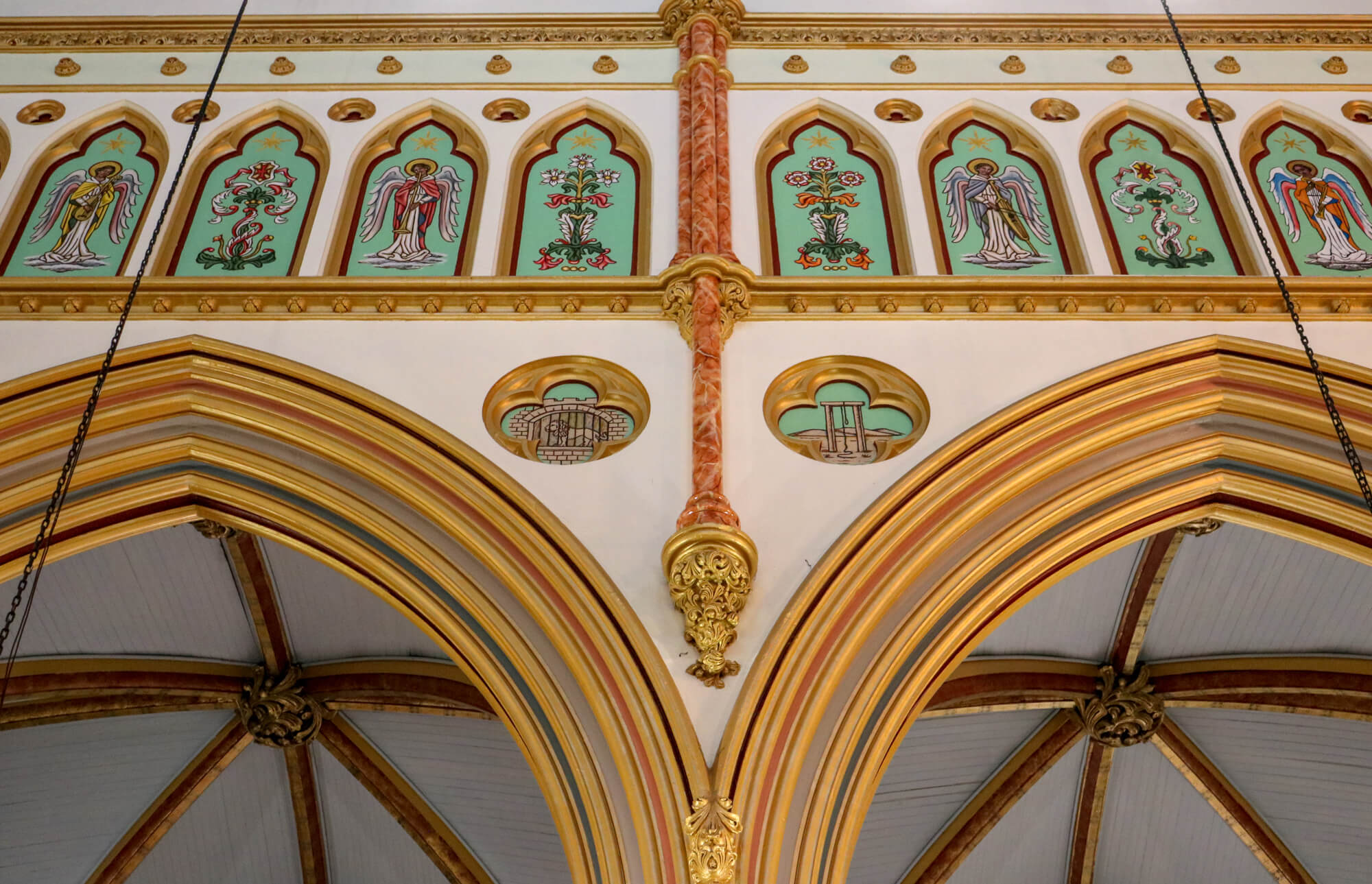
The church’s main altar was marble and was designed by architect Thomas Houghton. It was donated by the McMahon family, and cost thousands. Much was made in the papers about Mr. McMahon’s fine gift. Another wealthy parishioner, Mrs. Cahill, donated the tabernacle, and a beautiful baptismal font was the gift of a Dr. Sullivan. Not to be outdone, James McMahon also donated a solid gold chalice and a white silk cape with elaborate embroidery for special ceremonial masses.
The church was dedicated with much pomp and splendor on October 20, 1895. Bishop Laughlin had been on hand to lay the cornerstone in 1891, only months before his death. The founding pastor, Rev. Creighton died in 1904. Hopefully, he was able to attend the ceremony. The present pastor at the time, Rev. Woods has been memorialized in the stained glass window of the south transept, his successor, Rev. McCabe is depicted in the stained glass of the north transept.
A Magnificent Instrument Ushers the Church into the 20th Century
Just before the church was dedicated in 1895, a magnificent organ was installed, built by the Brooklyn firm of Reuben Midmer & Son. The pipe organ has three manuals, or keyboards, with 42 ranks, or stops. It has 2,312 pipes, with wind supplied by a large bellows with five feeders, all run by an electric motor. It was one of the finest church organs in Brooklyn.
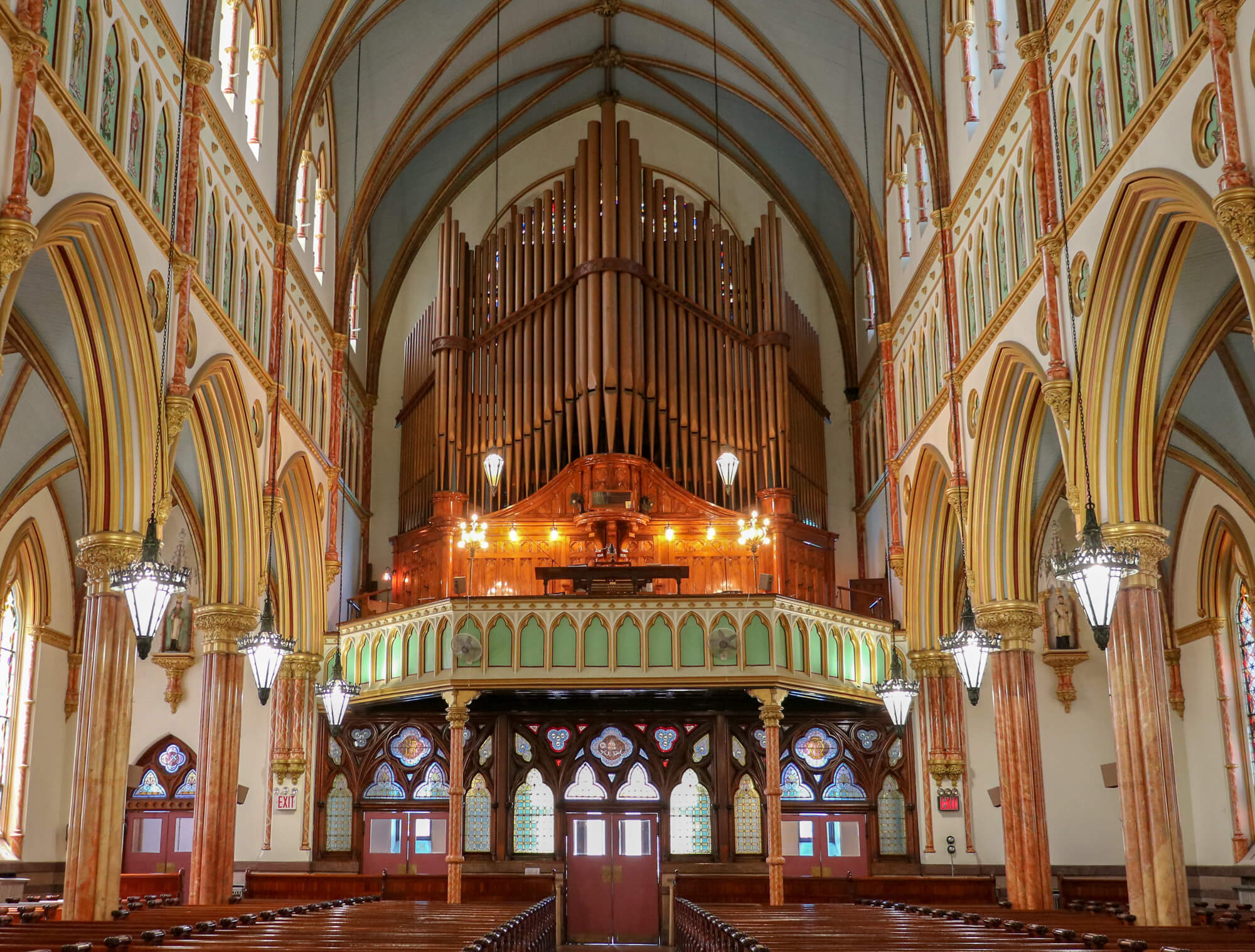
The dedication mass featured the magnificent organ, an orchestra and the choir, with soloists. They brought down the house with Mendelssohn’s “Priests’ March: and Meyerbeer’s “Coronation March.” It was said the organ could regularly be heard on Fulton Street, several blocks away.
The new church was soon the site of the usual weddings and funerals, as well as continued fund-raisers, concerts, lectures and other activities. Music always played a major role, with concerts galore, featuring prominent soloists and other musicians performing important works of the day, such as Rossini’s “Stabat Mater,” and other sacred masterpieces.
James McMahon and his family continued to be prominent parishioners here. His eldest daughter took the veil and became a nun, eventually becoming the Mother Superior of a convent in Queens. His eldest son Charles was married here, and his youngest son and his wife Katherine had their funerals here, the latter dying of a broken heart in 1895, after the death of the former in 1891. Katherine had been a tireless volunteer in the church, and in Catholic Charities. James remarried, twice, and James died at 83, in 1913.
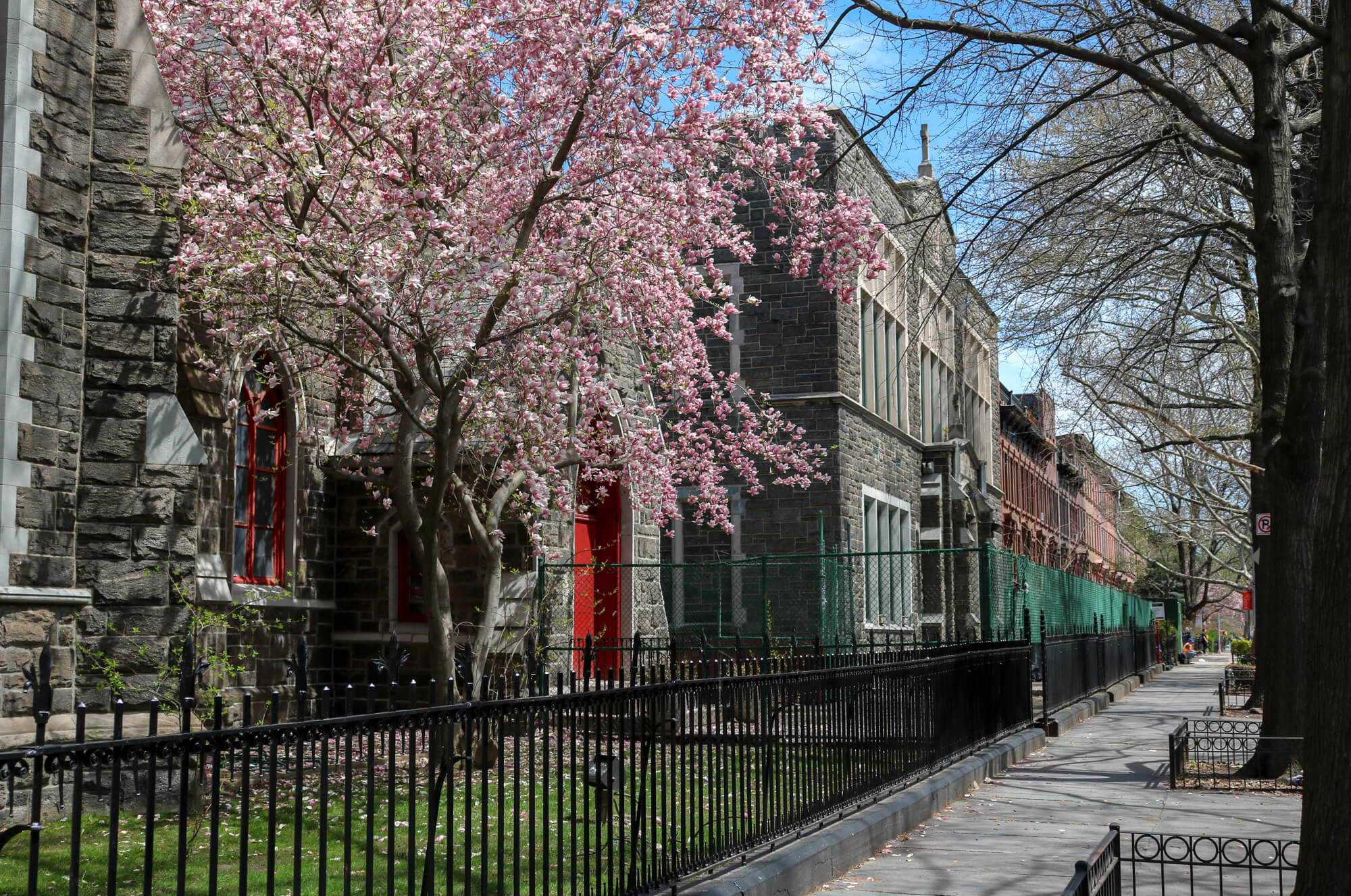
Reverend Woods, who was pastor here for a very long time, planned the rest of the LOV complex. It includes the parish house, rectory, convent and school. The rectory was probably designed by Houghton but was not built until 1908. Around the corner on MacDonough, the original stone church still stands between the Houghton church and the school.
The school and the convent, which faces Macon Street, were both designed by the firm of Helmle & Corbett and were built between 1922 and ‘24. Frank Helmle was a prolific and talented church architect, as well a master of general design. His churches include St. Gregory the Great in Crown Heights North and St. Barbara’s in Bushwick. He also designed the Prospect Park Boathouse and the Bossert Hotel. Helmle purposefully built complementary stone buildings that complete Houghton’s designs.
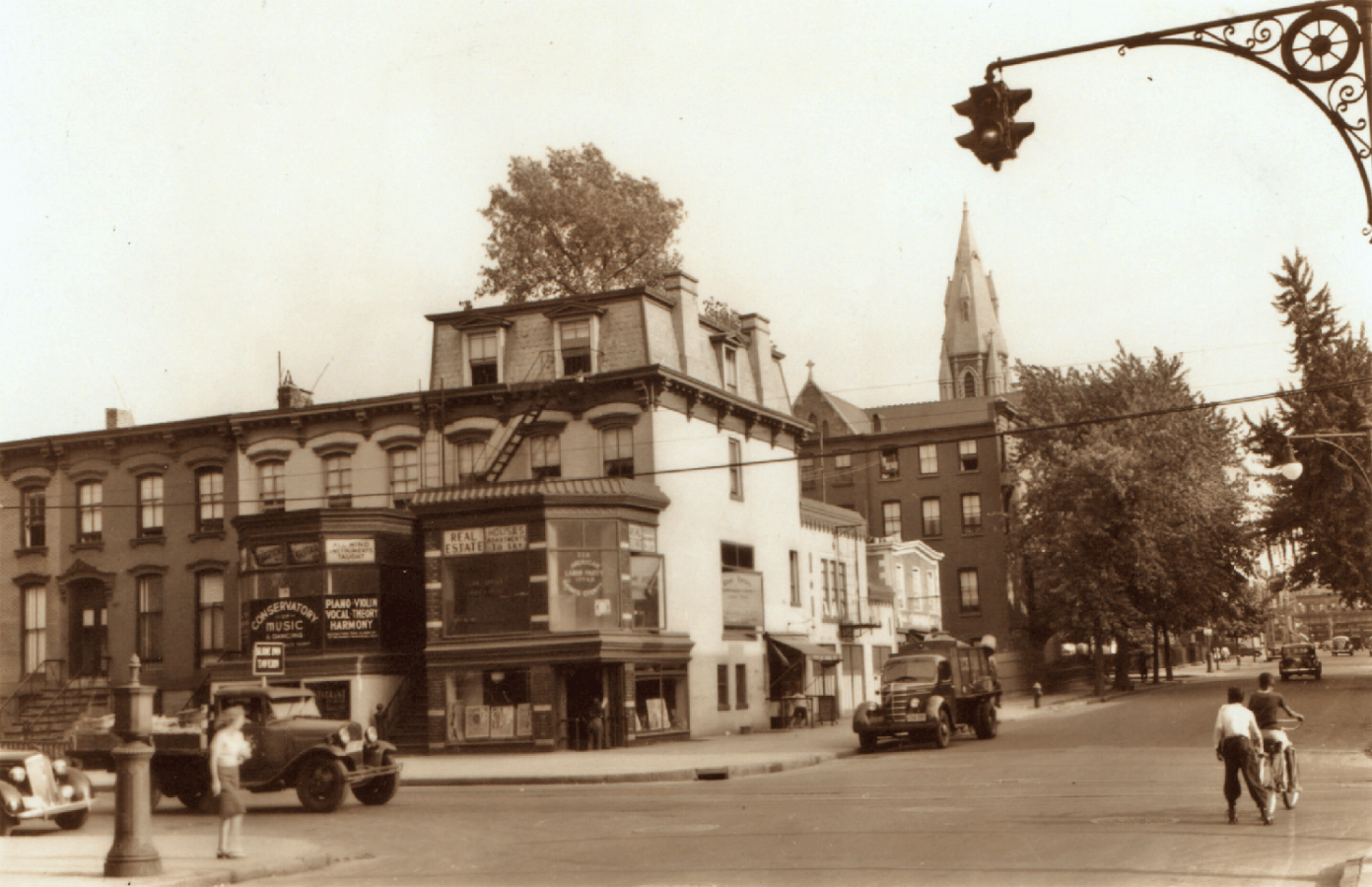
By the 1940s, Stuyvesant Heights had a sizable African American population. Most of the churches in the area were being sold to black congregations that had previously been downtown near the bridges. As the older white parishioners died, and their children moved away, they were replaced by black Catholics, many from the Islands and Catholic areas of the South. By the 1970s, the church had an all-black congregation, but still had Caucasian priests. That would also change over the years.
Church attendance and membership has shrunk amongst all denominations in the past 20 years, causing many churches to close or consolidate. Today, Our Lady of Victory has been consolidated into the parish of St. Martin de Porres. Resources and personnel are shared between Our Lady of Victory, St. Peter Claver Church, and Holy Rosary on Chauncey Street. All are in the Bedford Stuyvesant community, and all serve predominantly African American congregations. Now, in 2018, they are led by the Reverend Alonzo Q. Cox.
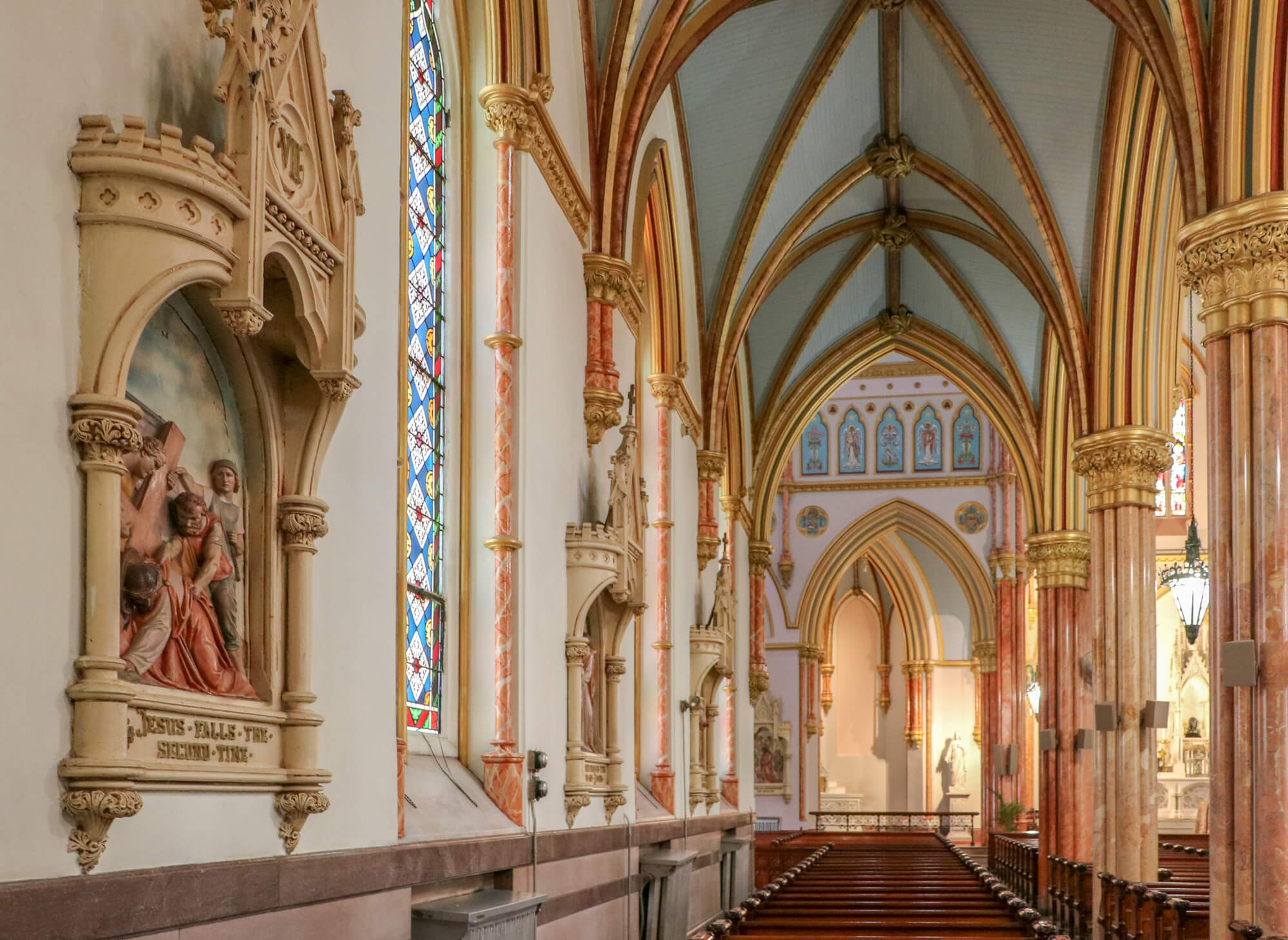
Our Lady of Victory has 150th anniversary celebrations planned. Prominently featured in those plans is the use of the Midmer organ. It was meticulously and expensively restored by David Schmauch and Donald Schwing, beginning in 1997, an effort that took almost two years. Each bellows had to be re-leathered; each stop repaired; the toe board, each key and pipe taken apart and restored. Even the roll-top console was refinished. It was a herculean effort that resulted in a Distinguished Historical citation to the restorers. When this magnificent instrument pours out its clarion of praise, the angels may just come down to listen.
[Photos by Susan De Vries unless noted otherwise]
Related Stories
- Building of the Day: 1173-1179 Bushwick Avenue, a Study in Simple Elegance
- Building of the Day: 583 Throop Avenue
- Walkabout: Frank J. Helmle, Architect
Email tips@brownstoner.com with further comments, questions or tips. Follow Brownstoner on Twitter and Instagram, and like us on Facebook.





What's Your Take? Leave a Comment